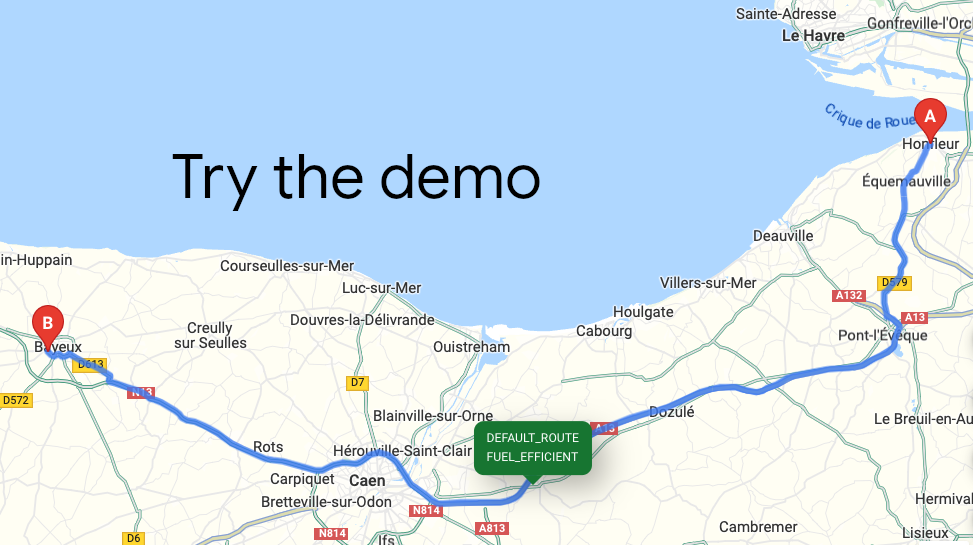
Introduction
The Route class provides the computeRoutes method for returning the ideal
route between two locations. Provide directions with real-time traffic for transit,
biking, driving, 2-wheel motorized vehicles, or walking between multiple locations.
Need Route Matrixes? If you are interested in a route matrix, see Route Matrix class overview.
Migrating? If you are migrating from the Directions Service (Legacy)
to the Route class, see
Migrate to the Route class.
Why use the Route class?
With the Route class, with a wide range of route details you can
route your vehicles or packages according to your preferences while optimizing for cost and
quality.
What can you do with the Route class?
The computeRoutes method returns the ideal route between two
locations. With the Routes library, you can do the following things:
- Get directions for different ways to travel:
- Modes of transportation: transit, driving, two-wheel vehicles, walking, or bicycling.
- A series of waypoints that you can optimize for the most efficient order in which to travel to them.
- Use multiple ways to specify origins, destinations, and waypoints:
- Text strings. For example: "Chicago, IL", "Darwin, NT, Australia", "1800 Amphitheatre Parkway, Mountain View, CA 94043", or "CWF6+FWX Mountain View, California"
- Place instances
- Latitude and longitude coordinates, optionally with vehicle heading
- Fine-tune your route options based on your needs and goals:
- Select fuel or energy-efficient routes for your vehicle's engine type: Diesel, Electric, Hybrid, Gas.
- Set fine-grained options for traffic calculation, letting you make quality versus latency trade off decisions.
- Set vehicle heading (direction of travel) and side-of-road information for waypoints to increase ETA accuracy.
- Specify pass-through versus terminal locations and safe stopover locations.
- Request toll information, along with route distance and ETA.
- Control your latency and quality by requesting only the data you need using a field mask, which helps you avoid unnecessary processing time and higher request billing rates.
